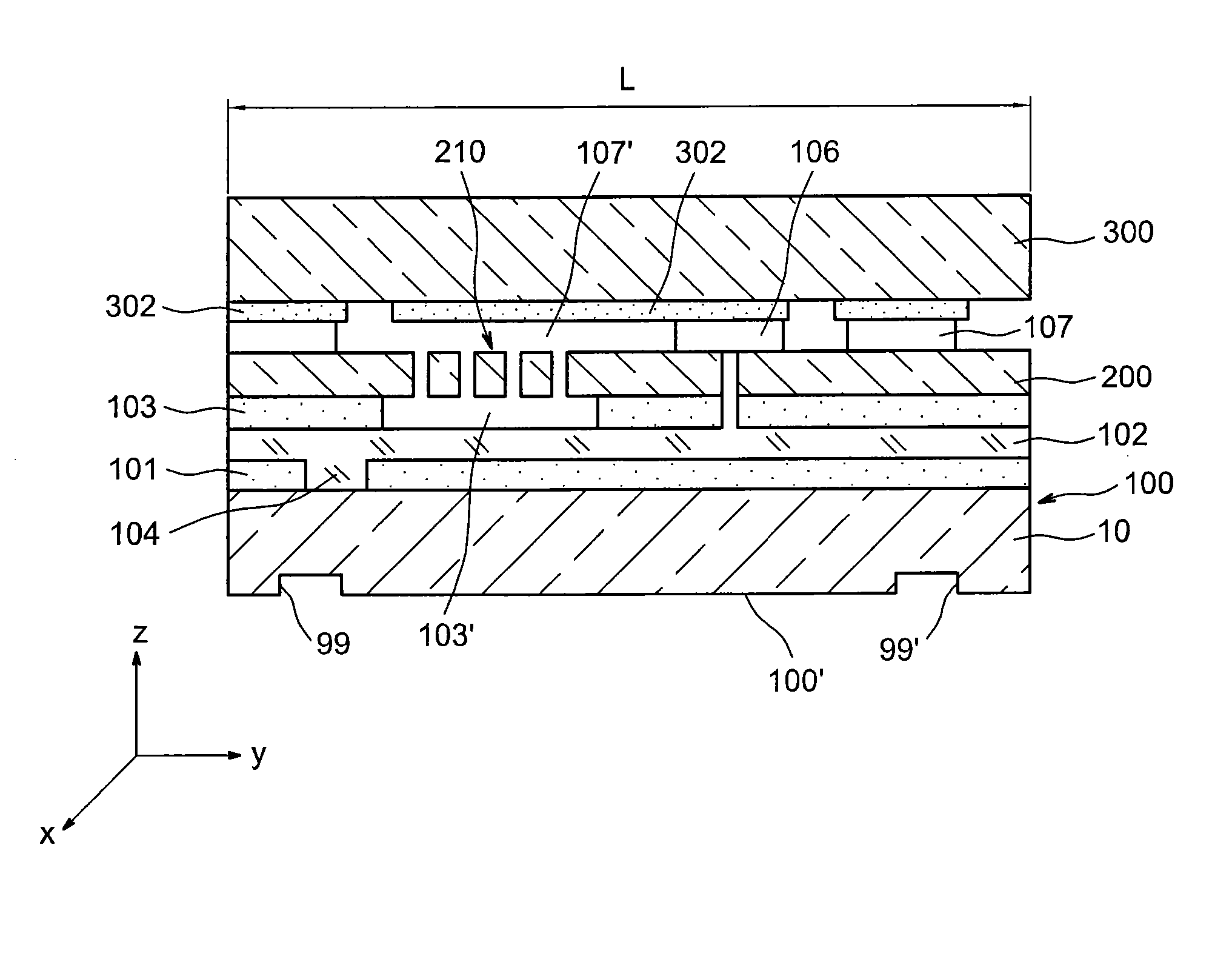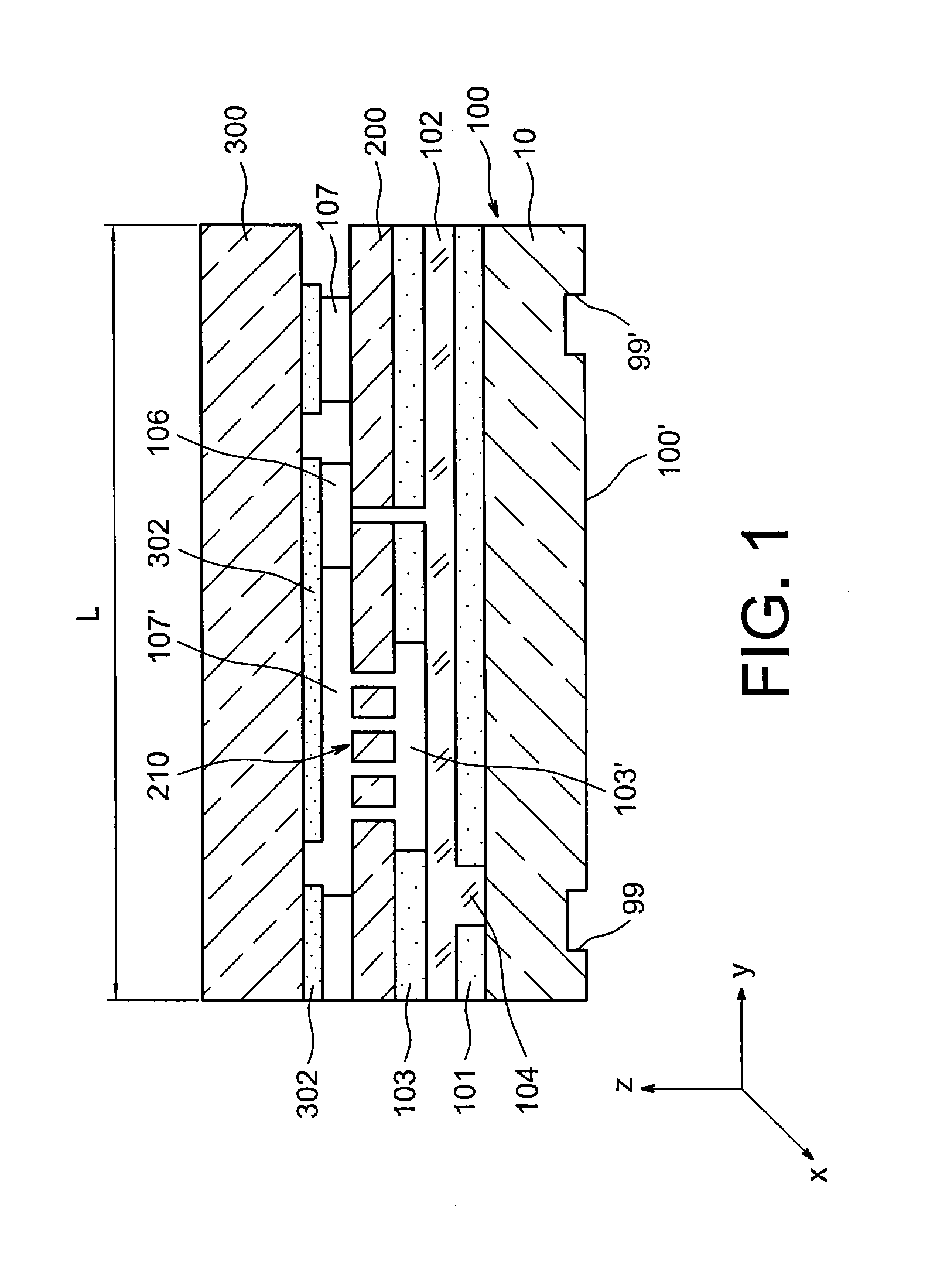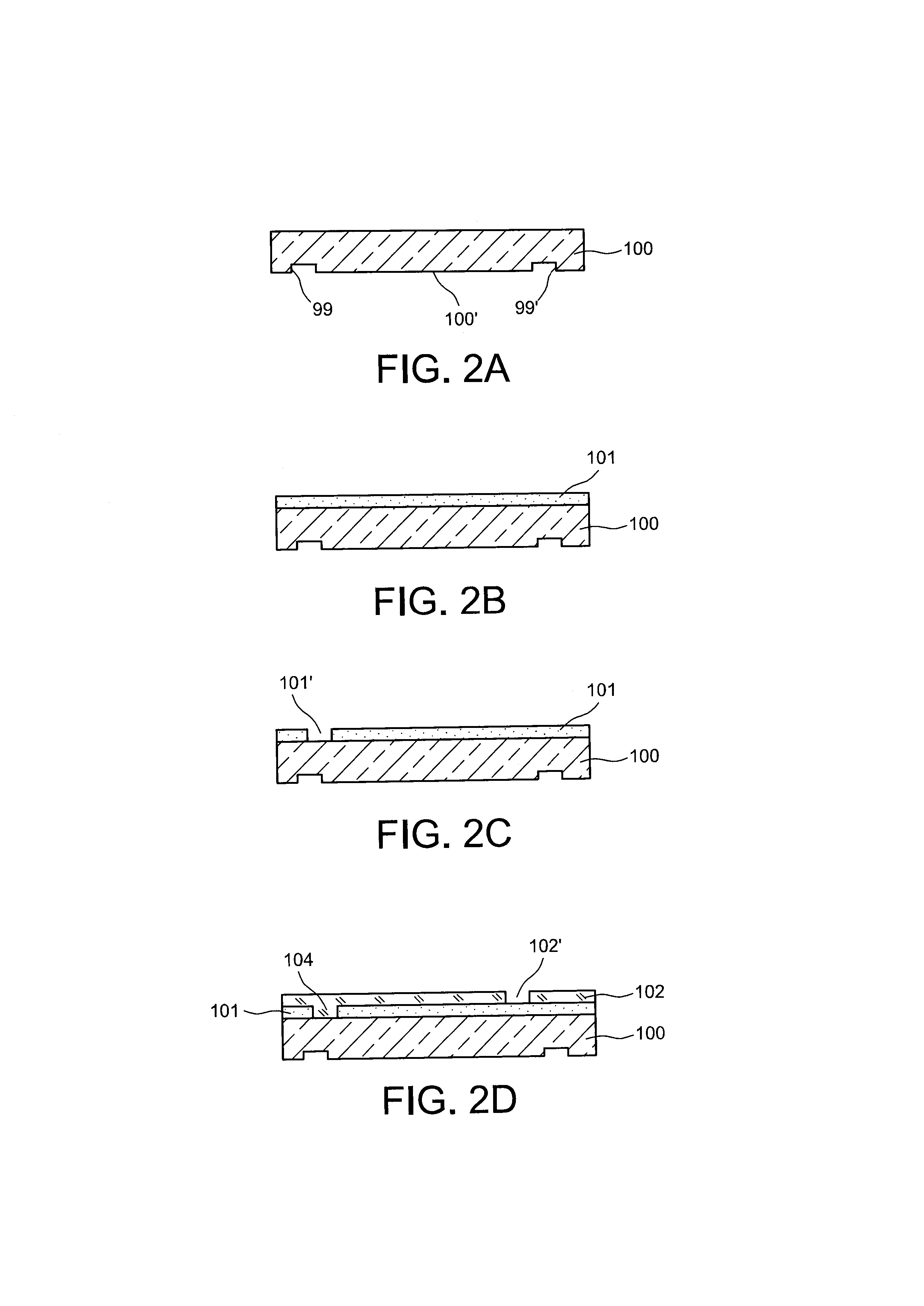Method for production of a structure with a buried electrode by direct transfer and stucture obtained in this manner
a technology of direct transfer and buried electrodes, applied in the field of micro and nanosystems, can solve the problems of degrading mechanical properties of non-monocrystalline structural layers, thick structural layers cannot be deposited, and the structural layer cannot be monocrystalline silicon
- Summary
- Abstract
- Description
- Claims
- Application Information
AI Technical Summary
Benefits of technology
Problems solved by technology
Method used
Image
Examples
Embodiment Construction
[0042]FIG. 1 represents a gyroscope with 2 detection elements with parallel capacitive electrodes, beneath and above the oscillating mass,
[0043]FIGS. 2A-2K represent various steps in the production of such a device,
[0044]FIGS. 3A-3G represent other steps of production of another device.
[0045]FIG. 4 represents an SOI substrate structure;
[0046]FIG. 5 represents a simplified top view of the intermediate substrate, with a moving structure;
[0047]FIG. 6 represents a system enabling substrates to be aligned.
DETAILED ACCOUNT OF PARTICULAR EMBODIMENTS
[0048]In the remainder of this document reference is made to molecular bonding, also called direct bonding or direct sealing. This assembly technique is described notably by Q. Y. Tong in “Silicon Wafer Bonding Technology for VLSI and MEMS applications”, Edited by S. S. Iyer and A. J. Auberton-Herve, 2002, INSPEC, London, Chapter 1, pages 1-20.
[0049]An example of a structure illustrated in FIG. 1, which is a section view, is first described.
[005...
PUM
| Property | Measurement | Unit |
|---|---|---|
| Semiconductor properties | aaaaa | aaaaa |
Abstract
Description
Claims
Application Information
 Login to View More
Login to View More - R&D
- Intellectual Property
- Life Sciences
- Materials
- Tech Scout
- Unparalleled Data Quality
- Higher Quality Content
- 60% Fewer Hallucinations
Browse by: Latest US Patents, China's latest patents, Technical Efficacy Thesaurus, Application Domain, Technology Topic, Popular Technical Reports.
© 2025 PatSnap. All rights reserved.Legal|Privacy policy|Modern Slavery Act Transparency Statement|Sitemap|About US| Contact US: help@patsnap.com



